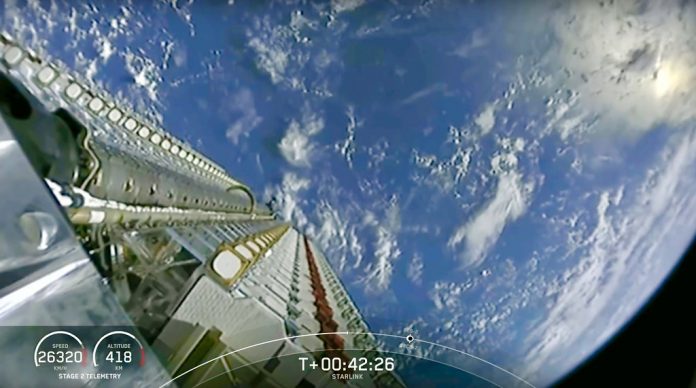Government-funded fiber is capital-intensive, whereas satellite—and even cellular—technologies can be deployed quicker and more cost-effectively.
(Author’s note: Thank you to Dave Heatley for providing the photographs for this piece.)
Fiber has been front and center in the National Telecommunications and Information Administration’s (NTIA) call for projects to utilize its $45 billion share of the $65 billion Infrastructure Investment and Jobs Act broadband allocation. The focus on fiber in the Notice of Funding Opportunity ignited a debate on the place of other technologies—satellite internet in particular—for remote, rural, sparsely populated, and otherwise costly to reach locations.
While support for fiber draws on its high speed and symmetric transmission capabilities, there is a valid question about the role of satellite technologies when it comes to serving areas without broadband service. Recent technological advancements using low-Earth-orbit satellites (e.g., Starlink) have increased the quality and reduced the cost of satellite services markedly.
While the initial cost per user for the satellite equipment is higher than for a fiber box, and ongoing subscription charges may be higher, there is a significant advantage in that the technology is available immediately. It may not offer the same quality as fiber, but it does offer immediate benefits for consumers trying to access services who otherwise may have to wait months or even years for installed lines to reach them.
The economic gain of this instant access is a dynamic efficiency benefit that, in fact, becomes an opportunity cost of the choice to prioritize fiber over satellite in those areas at the margins of economic viability for fixed-line infrastructure. The time advantage conferred by satellite means that the effective break-even point between the technologies pushes the potential satellite footprint much wider than has typically been the case in policy analyses using only static costs per connection to inform decision-making.
A real risk exists, then, that fiber favoritism may lead to lower economic benefits from the federal funding than might otherwise have been the case. It also begs the question of how far is too far to push fiber into rural and remote locations. While blindly prioritizing fiber may be good politics, it is not always good economics or effective provision of societal benefits.
A case in point comes from New Zealand. In a political decision in 2020, based on money earmarked for rural development, the government committed to funding a 120 kilometer fiber cable connecting Milford Sound in Fiordland to the country’s Ultrafast Fibre Network (in the closest town, Te Anau—population: 2,760). Milford Sound is one of New Zealand’s most famous—and most remote—tourist destinations, with a permanent population of only around 120 residents. To get there, fiber must be laid through some of the country’s most mountainous and inhospitable, but beautiful, landscapes.


While funding was committed and construction allegedly commenced in 2020, the project is still very much a work in progress two years later, based on photographs taken in the area last month. This is not surprising, as the road along which the cable is being laid is avalanche-prone and frequently closed due to inclement weather.

While the fiber cable to Milford Sound is yet to be completed, a cell tower has been built and deployed using Rural Broadband Initiative (RBI) funding (presumably using microwave links to connect to the rest of the network, as this does not require expensive trenching over the mountains). RBI funding is targeted at serving the country’s most rural localities, where it’s already been determined to be uneconomic to provide fiber.
The cell tower confers almost all the benefits that could be attributed to the fiber connection, according to reports from residents about their use of the new services. With the mobile connectivity afforded by satellite available, one can likely assume that the same users have also been using satellite for broadband as well. Moreover, Starlink has been available here for at least a year.
It must reasonably be asked what additional benefit the new fiber connection will bring to Milford Sound, above that already available from the satellite and mobile services; whether this will accrue primarily to the town’s tourists or its 120 residents; and whether it was worth what must be one of the most exorbitant marginal costs per connection in the country. This is not to mention the question of whether the 120 residents would have foregone cellular benefits (given they already had satellite) to wait—who knows how long—for fiber.
For U.S. policymakers and industry, the Milford Sound case illustrates that the benefits to consumers of satellite—and even cellular—technologies can be deployed quicker and more cost-effectively than fixed-line fiber. Also, a lack of funding coordination can lead to expensive and unnecessary overbuilding when fiber is favored unconditionally over technological rivals.
Originally published by the American Enterprise Institute. Republished with permission.
For more Budget & Tax News.











